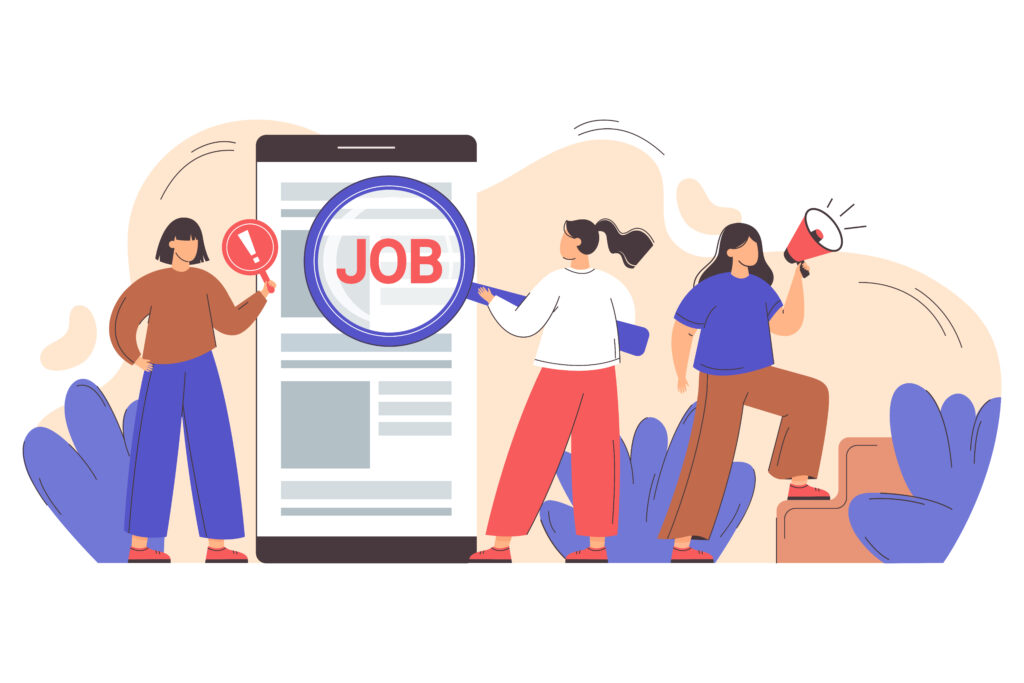You open your inbox and see 500 resumes for a single role. You skim the first few, flag some keywords, but you know you’re going to miss good candidates buried beneath noise.
What if you could instead upload resumes and your job descriptions into a tool, and minutes later, have a ranked list of high-fit candidates? That’s what an AI-powered resume screening tool does: automates the boring bits so you can spend your time talking to the people who actually matter.
💡Case-in-point: A Fortune-500 global consulting company used an AI tool (impress.ai) to automate ~80% of its candidate shortlisting. The result? They saved 396 recruiter hours, improved the accuracy of candidate assessments, and slashed candidate drop-off by 41%.
In this guide, Rakuna will give you the run-down of resume screening, what it is, how it works, and most importantly, how you can start screening immediately, for free.
1. What Is AI Resume Screening?

AI resume screening uses artificial intelligence, mainly natural language processing (NLP) and machine learning, to scan and rank resumes against a job description. Instead of keyword hunting, these tools parse resumes into structured data (skills, experience, education) and compare them to the role’s requirements.
💡Think of it as moving from “Ctrl+F” keyword search to a system equipped with the logic to understand context and learn from feedback over time. Indeed defines it as “using machine learning to identify high-quality candidates”.
Here’s how different approaches work in practice:
- Keyword matching: Finds specific terms from the job description (e.g., Python, project management) and ranks resumes accordingly.
- Context analysis (NLP): Understands meaning, not just words. For example, it knows “managed risk mitigation” relates to compliance skills.
- Pattern recognition: Spots trends like steady career growth or frequent use of industry-specific language.
By combining these methods, AI screening tools can go beyond simple keyword matching. They can score each resume on fit and send you a ranked shortlist. For example,
💡RakunaScreen’s AI assistant uses context analysis to score resumes based on how well they match your JD and immediately flags the top candidates. The goal is to reduce manual work – instead of reading 300 resumes, a recruiter reviews the top 20%.
2. Why Use AI Resume Screening?

For large employers and high-volume recruiting, AI screening is rapidly becoming the norm. In fact, over 8 in 10 companies already use or plan to use AI for resume reviews. A recent industry survey found 82% of companies use AI to review resumes today, and 83% plan to do so by the end of 2025.
Nearly all Fortune 500 firms (≈99%) now automate at least parts of hiring. In other words, AI resume screening is starting to move from a niche into a core process of modern recruiting. Using AI can transform hiring speed and quality. Some key benefits:
i. Handle huge applicant volumes
Recruiters often get hundreds of resumes per role. According to a report by Glassdoor, a typical corporate job posting receives around 250 applications.
AI can parse and provide an initial assessment to those 250+ applications in minutes, whereas manual screening, note-taking, and reporting could take days.
This drastic time savings means you will have more time to analyze and focus on qualified and high-skilled talent, ultimately filling positions faster without trading the quality of your candidates.
ii. Improve candidate match quality
An AI resume screening assistant with NLP doesn’t just filter out resumes; it analyzes skills, experience, and even soft-skill indicators to find the best fits. Studies show candidates selected by AI tools are more likely to succeed later.
For instance, one analysis (reported via Forbes) found resumes chosen by an AI were 14% more likely to pass interviews and receive offers than randomly selected ones. AI tends to catch hidden gems (good candidates who might not have every buzzword but have the right experience) and avoid obvious mismatches.
iii. Cut recruiting costs
By automating resume screening, companies save recruiter time and money. A Forbes article notes organizations using AI for hiring have seen about a 30% reduction in cost-per-hire, since fewer staff-hours are spent on initial sift.
AI tools also schedule interviews and answer basic queries, freeing recruiters to do higher-value work. These savings matter especially for high-volume hiring (e.g., retail tech support roles or call centers) and help justify AI adoption in large enterprises.
iv. Enhance fairness and consistency (when done right)
Ideally, an AI system applies the same criteria to every resume, reducing human bias. In theory, AI ignores irrelevant details (like a candidate’s alma mater or name) and grades everyone by skills and achievements.
Some recruiters find that introducing AI actually reduces unconscious bias, because the algorithm won’t skip a candidate just because of a fancy font or a gap in years. However, this benefit depends on good design – training data must be balanced (see next section on risks).
3. Potential Drawbacks and Candidate Concerns

AI resume screening is powerful, but it’s not perfect. It’s important to be aware of limitations so you can address them:
- Bias and fairness risks: AI is only as unbiased as its training data. If an AI model were fed historical hiring data skewed by gender, race, or age bias, it could reproduce those biases. Research (e.g., UW’s Center for Technology Innovation) has shown that some AI resume systems can favor resumes with traditionally “white-sounding” names, disadvantaging Black candidates. In practice, this means recruiters should monitor AI outputs carefully – AI should aid, not replace, human judgment.
- False positives/negatives: No algorithm is 100% accurate. AI might let through some weak resumes that happened to tick a lot of keyword boxes, or wrongly filter out a well-qualified candidate whose resume had atypical phrasing. Indeed’s guide warns you could get both false positives (irrelevant resumes in the shortlist) and false negatives (good candidates missed). To mitigate this, always review a sample of “rejected” resumes yourself, or adjust the AI’s sensitivity.
- Candidate reaction: Some applicants dislike AI filtering. A recent industry report noted 66% of U.S. job seekers said they would refuse to apply if they knew an AI would be making major hiring decisions. While younger or tech-savvy candidates may be fine with it, others worry about being judged by a “robot”. To address this, companies often mention “ATS filtering” or provide a human touchpoint early on (see best practices below).
4. How to Implement or Pick AI Resume Screening

💡If you decide to adopt AI screening, follow these guidelines to get the most out of it:
Choose a mature, secure platform:
When selecting an AI resume screening tool, prioritize vendors with proven AI capabilities rather than simple automation, along with strong security measures. For example, RakunaScreen protects candidate data with ISO 27001-certified protocols, ensuring that resumes are private, not stored, and not used to train models; they are securely deleted immediately after processing.
Scalability and bulk-processing capabilities are equally important: a robust platform should handle 10 to 100+ resumes simultaneously without slowing down, enabling your team to efficiently manage high-volume hiring without compromising performance or security.
Define clear job criteria up front:
Successful AI resume screening starts with a precise and well-crafted job description. The more specific your JD – including required skills, relevant experience, certifications, and other must-have qualifications- the better the AI can match candidates to the role. Tools like RakunaScreen allow you to upload your JD and automatically score each resume against it, highlighting top-fit candidates instantly.
Clear criteria also help reduce false positives and negatives, ensuring the system doesn’t overlook strong applicants or flag unqualified ones.
💡So in short, investing time upfront to define what “ideal” looks like pays off by making the AI screening process faster, more accurate, and aligned with your organization’s hiring standards.
Test and validate the AI:
AI resume screening is a tool, not a magic wand; it requires careful testing before it is fully deployed. Start by running the system on past job openings or a small batch of current applicants and compare its shortlisted candidates to those identified through human review. This helps you spot if strong candidates are being overlooked or if irrelevant resumes are flagged as top matches
Maintain human oversight (“hybrid approach”):
While AI can handle the repetitive early stages of resume screening, human judgment is essential for final hiring decisions. Rakuna recommends a hybrid approach where AI and human review work together.
In practice, this might mean the AI shortlists the top 20% of candidates, and then a recruiter or hiring manager reviews borderline cases or high-potential profiles the AI flagged but wasn’t confident about. This approach aims to both catch errors or omissions from the AI and preserve the human touch that candidates value, ensuring hiring decisions are both efficient and fair.
Audit for bias and fairness:
Even the most advanced AI is only as unbiased as the data it’s trained on, so regular auditing is critical. Fortune-500 recruiters should periodically review how the AI ranks candidates across key demographics and job-relevant attributes to ensure it isn’t unintentionally favoring certain groups.
Some platforms, like RakunaScreen, provide detailed scoring breakdowns, allowing you to see why a candidate was ranked a certain way. External audits or internal HR reviews can help detect patterns of bias, allowing teams to adjust job criteria, retrain the AI, or refine algorithms.
Be transparent to candidates:
Inform applicants that you use AI screening. This can be noted on the careers page or job posting. Providing a simple FAQ about how AI is used (e.g., “resumes are initially ranked by keyword and skill match”) can ease concerns.
Some city regulations (like NYC’s Local Law 144) even require that applicants be told about automated screening and given an alternative testing option. Even if not legally required, transparency builds trust.
Train your team:
AI is only effective when your recruiters and hiring managers understand how it works. Provide training on how the tool scores resumes, what each metric or highlight means, and how to interpret AI recommendations. Emphasize that AI is a support tool, not a replacement for human judgment, and make sure hiring managers know how to spot potential biases or anomalies in AI outputs.
Investing time upfront in proper training ensures your team uses the system confidently and correctly, maximizes efficiency, and maintains fair, high-quality hiring decisions.
💡By following these best practices, recruiters can leverage AI resume screenings safely and effectively. The goal is to blend technology and human insight.
5. Example: RakunaScreen Features

To illustrate how AI screening works in a real tool, consider RakunaScreen by Rakuna (as an example). RakunaScreen lets you upload a job description and a batch of resumes; within seconds, it returns a scored shortlist. Its key features include:
- Fit scoring: Each resume is automatically scored based on how well it aligns with your job description. This scoring approach mirrors what most modern AI platforms offer, giving recruiters a clear, ranked view of who to prioritize for interviews..
- Transparent breakdown: For each resume, you can see what drove the score. RakunaScreen shows which sections (skills, experience, etc.) helped or hurt the match. This helps recruiters interpret the results and adjust their JD criteria if needed.
- Bulk processing: The system can handle high volumes (10–100+ resumes at once). This is critical for campus or hourly roles. You simply drag in your resumes and get a fast report back.
- Data security: RakunaScreen emphasizes ISO 27001 compliance and explicitly states it doesn’t store resumes or train on your data. This addresses privacy concerns and aligns with best practices for securing candidate information.
- Free to use & improve: RakunaScreen is offering free and unlimited access so recruiters can test and improve on real resumes without cost.
💡While many vendors have similar features, RakunaScreen’s example shows how modern tools are designed for ease-of-use and transparency. In practice, a Fortune 500 recruiter might compare a few tools on exactly these points: JD-based scoring, result explainability, and secured data handling policies.
6. Conclusion

AI resume screening is not the future; it is already a part of most large companies’ hiring processes. For Fortune-500 recruiters, understanding the basics is key. When implemented thoughtfully, AI can cut down screening time and reduce hiring costs, ultimately helping to surface better-fit candidates in record time.
However, there is a catch: AI works best when paired with human judgment. Do not forget to regularly audit your chosen screening assistant to prevent bias and uphold transparent communication, keeping your candidates informed.
Whether you pilot a tool like RakunaScreen or another platform, the goal is the same: use AI to streamline your process, improve candidate fit, and give your team more bandwidth to focus on the human side of hiring.

Team Rakuna
The Rakuna Team comprises a diverse group of professionals hailing from various corners of the world.
With a passion to enable organizations to hire their next waves of talents, we are dedicated to help organizations stay updated on important recruiting technology and industry best practices.


